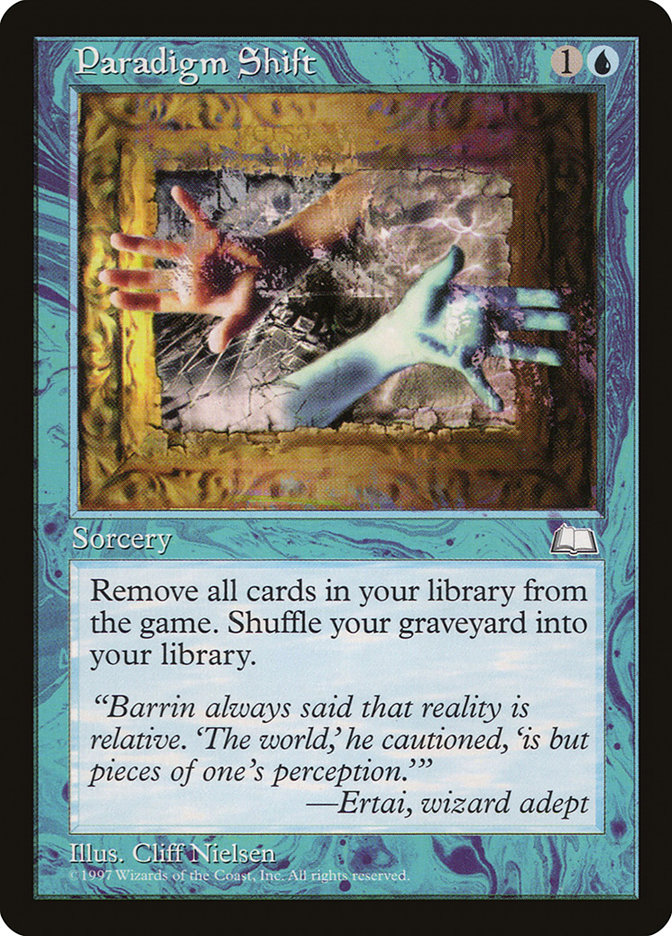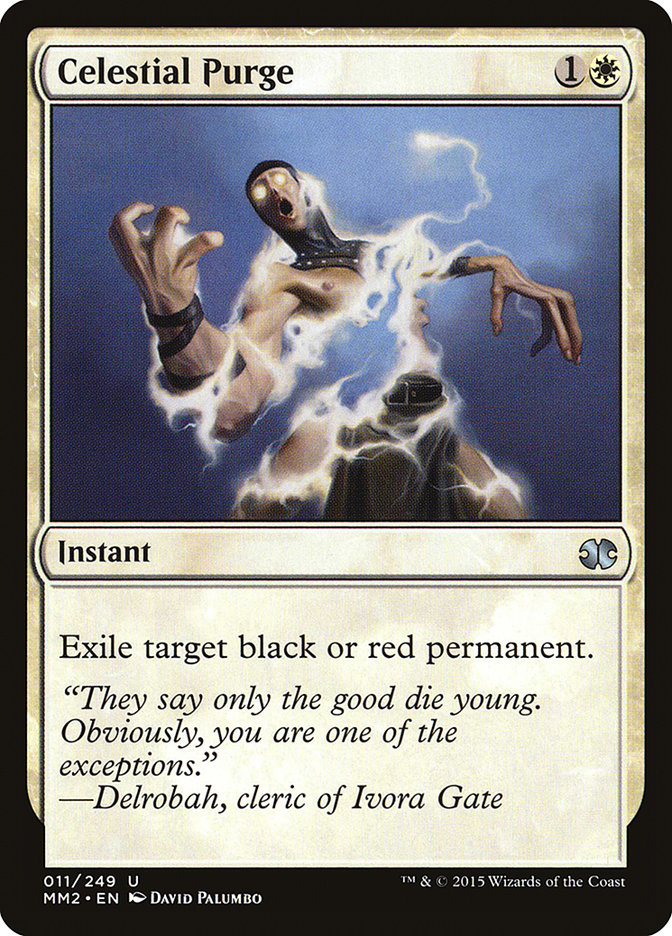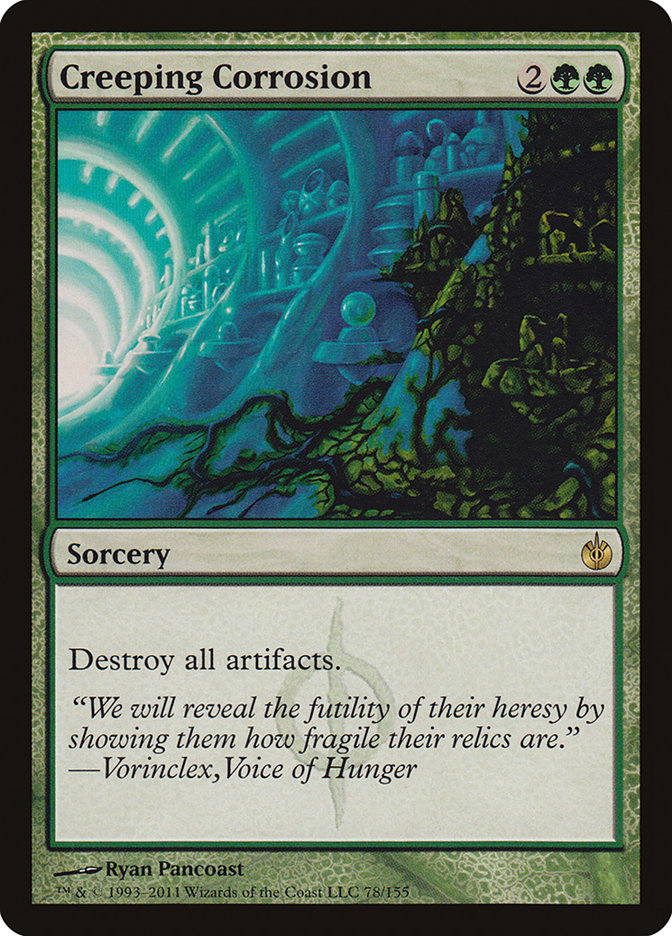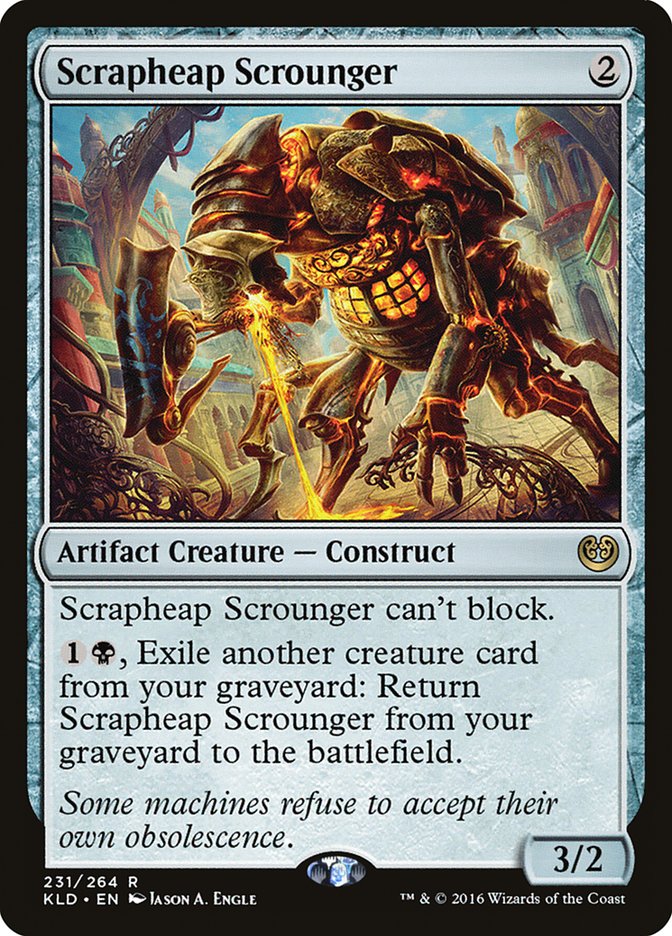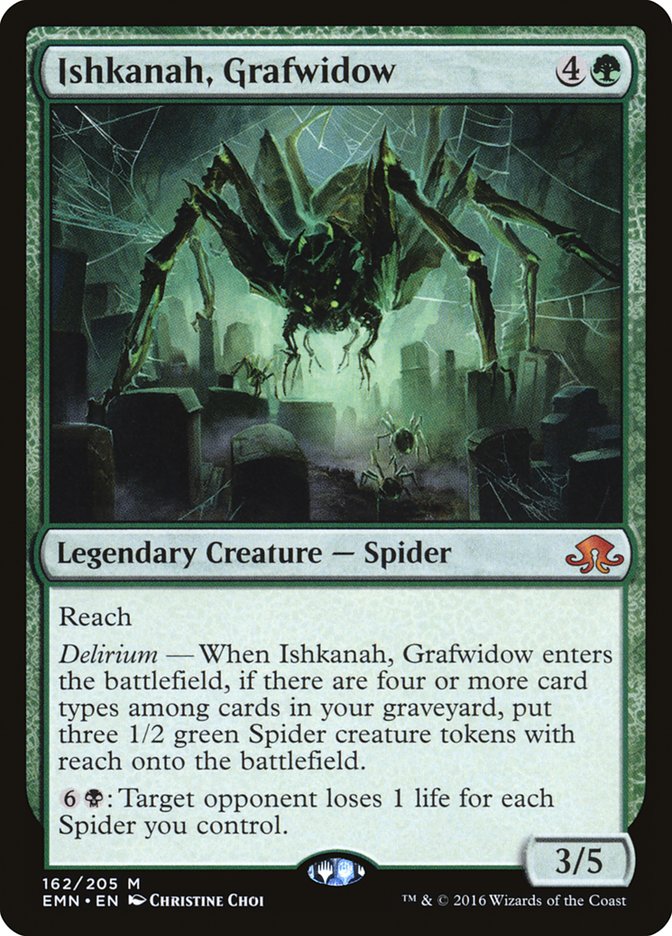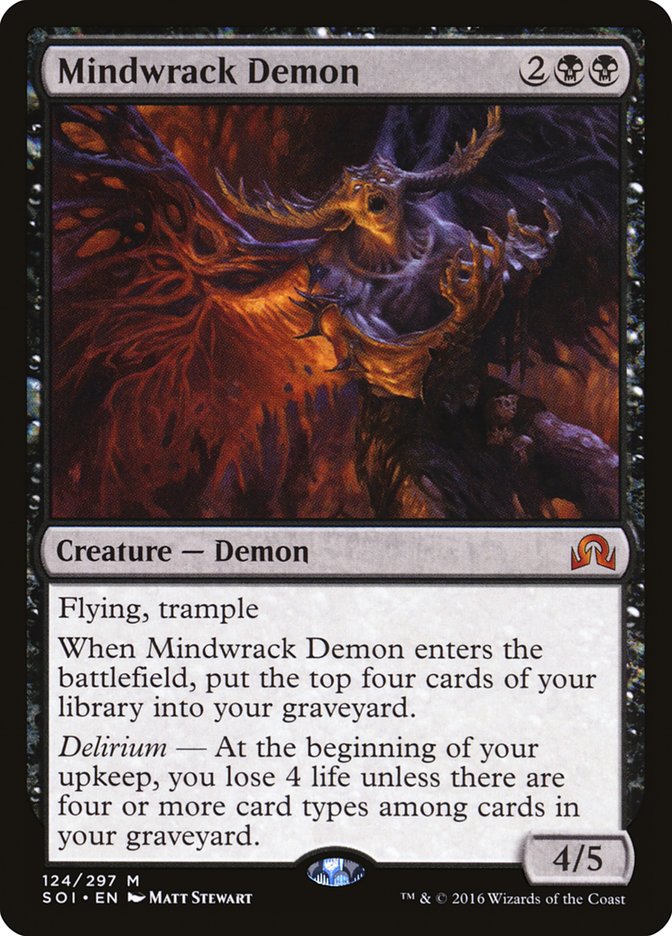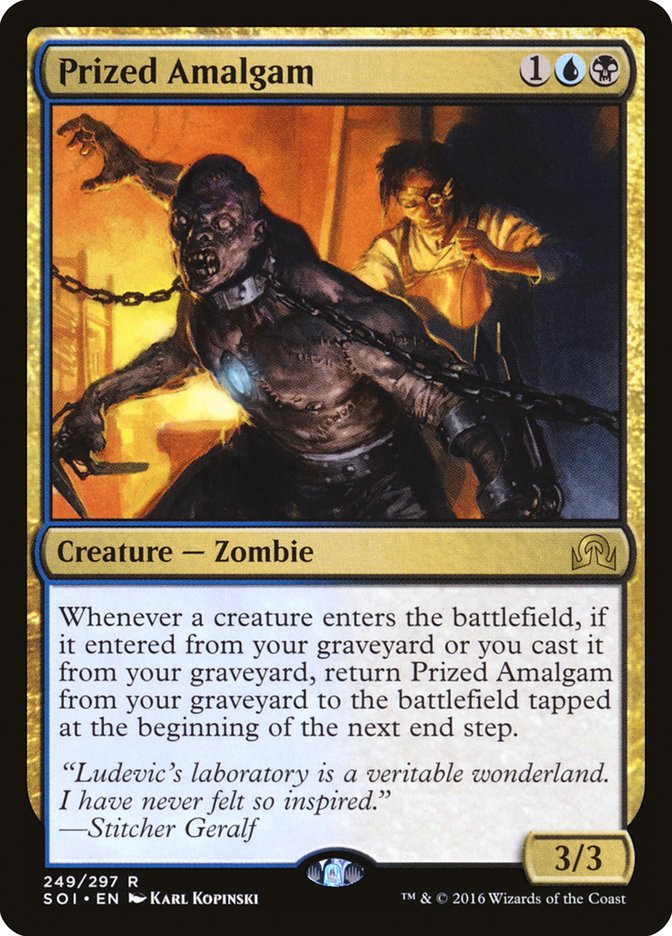Sideboarding is the most integral part of Magic for tournament success at the highest levels, but more often than not I see its relevancy belittled. Players of varying skill all share the constant of allocating a disproportionate amount of their time focusing on perfecting their maindeck even though they understand just how important a good sideboard is. They know this, but choose to ignore it.
So why do players accept this shortsighted approach to the game? Is it laziness? Accepted ignorance? Or maybe is it just that the barrier to entry is too daunting? Regardless, learning how to design and then execute a well-constructed sideboard plan is without a doubt the most important talent to master. Sadly, it’s also one of the most difficult things to teach.
“I feel like Brad makes better use of his sideboard than just about everyone else.” – Randy Buehler, 2015
One of my greatest strengths as a professional Magic player is having the discipline to perfect sideboard plans. I don’t believe I have some innate ability, but rather an understanding that this is one area of the game I can exploit to tip the scales in my favor against those who are more naturally gifted. It’s work, pure and simple, but work that has clearly paid off. I say this not to float my own boat, but to inform those questioning their own abilities that this is just a skill that can be mastered. Today I lift the veil and show you how I approach sideboard construction.
It’s important for to state that I won’t be able to cover everything in just one article. Today we are going to focus on midrange strategies that can switch roles or sideboard a large number of cards. This encompasses strategies that don’t have so linear a strategy as decks like Grixis Control or Death’s Shadow. That might get covered down the road, but for now I want to talk about what I know best.
My Identity
I’m a midrange player at heart. I believe the highest win percentage can be achieved with strategies that can pivot from game to game, matchup to matchup. This doesn’t make me a one-trick pony, since I will and do play whatever I believe will give me the best chance to succeed, but it does encapsulate my bias towards decks that facilitate to my beliefs in how to approach the game.
Games with and without sideboards tend to play out differently. Game 1 often revolves around two strategies that aren’t matched up well against each other. Proactivity often defines these games as both players are trying to find the best way to attack through the opposition.
Once sideboards are introduced, a shift occurs where both players now have the correct tools to interact with one another. This causes games to go slightly longer as a higher percentage of cards will bounce off one another as they are sent to the graveyard.
Given this belief, my approach to each style of game shifts between “zone defense” and “man-to-man coverage.” I tend to approach Game 1 with a zone defense. I don’t want to interact with my opponent at a high frequency, since more often than not my cards will not match up with theirs as seamlessly as they will after I get to sideboard. Once I’m able to reach for my precious fifteen cards, my strategy will often shift to man-to-man coverage. My sideboard will be filled with the correct tools so that my deck will be able to engage more often and hopefully come out on top of those interactions.
The Chopping Block
To effectively accomplish this, there often has to be a sacrifice in the power level of the cards I have access to. My goal is to tightly interact with my opponent, giving them very little breathing room to execute the strategies they want to implement. More powerful cards often cost more mana, making them clunkier and less reliable for playing at the specific times they may be needed. This sacrifice in power gives me flexibility by playing cheaper cards.
The reason I do this is to increase my win percentage on the draw, under the belief that being on the play is enough of an advantage to accept this cost. There’s obviously a balance between power and flexibility that needs to be found, but I tend to lean more towards flexibility than many of my colleagues.
It’s vital when trying to execute this strategy that you have a deep understanding of what to expect out of the opposition. Layering your sideboard to interact with an entire metagame will only be achieved if you are slightly going over the top of most aggressively slanted strategies and under the power-driven ones. This can mean a variety of things, whether it’s in efficiency, maneuverability, or power level. For highest impact, I’ll often sacrifice a matchup I deem affordable to intensify the sideboard’s potency against the remaining field. The best example right now would be Aetherworks Marvel. I’ll gladly give up points in that matchup to better facilitate a plan against B/G Delirium, W/U Flash, and Mardu Vehicles.
The only way to achieve a fully functioning sideboard is to simply put in the work. You have to know every deck in the format inside and out. This involves the cards they sideboard in and take out against the deck you are playing, or what you think they will be if you are playing a new deck. It’s obviously impossible to predict what anyone will actually do or have, but having an idea is important. To achieve this, you have to be constantly up to date with what each deck looks like and current with what the content people are reading is telling them to do. You need to know if a popular content provider just published a well-tuned list of a Tier 1 strategy with a sideboard guide. There’s a good possibility that a high number of players using that archetype will be on a similar list with a similar gameplan. You need to take that information and use it against them.
The Base of Operations
With this knowledge a foundation can be formed. It’s important to look for trends emerging in how subsets of decks will sideboard against you. If you find common themes, you may be able to incorporate a transitional sideboard into your strategy. This is something I’ve done many times in the past to great effect. Not only are you applying good strategies, but the power level is higher than normal thanks to the overlapping matchups.
Here are some of my best examples of this.
Creatures (11)
Planeswalkers (6)
Lands (25)
Spells (18)

The corresponding article is here.
Mardu Midrange wasn’t a great deck, but it did some great things before Abzan Control pushed it out of the metagame. One of the best assets this deck had was its ability to transition from aggressive to controlling depending on what you predicted your opponent to do. The deck was given access to such a controlling sideboard to combat Green Devotion decks, but it was only possible thanks to what the rest of the format did to deal with Mardu. The main trend I found for Mardu Midrange was that many decks would bring in additional removal to deal with Goblin Rabblemaster, given how volatile the card can be when left unchecked. The next level was to transition into a more controlling deck when you anticipated them taking a control route. Both players took a controlling role, but you did so knowing they have excess removal in their deck, while you have planeswalkers and card advantage. They all prepared to go lower, so I went bigger.
Creatures (10)
Planeswalkers (3)
Lands (26)
Spells (21)

The corresponding article is here.
Abzan Control from Grand Prix Memphis holds a special place in my heart for how simple yet effective its transitional sideboard was. It really was just four Fleecemane Lions, but the impact was so huge. Jacob Van Lunen and I identified that removal in most maindecks was high for the two-mana 3/3 but would undoubtedly be taken out for sideboarded games against the control variant of Abzan. This would be when the card would be at its highest value, and also a sneaky threat that an opponent might not be able to deal with, given cards like Valorous Stance were often sideboarded in. They all prepared by going bigger, so I went lower.
If you can’t find trends, then a more traditional sideboard will be in order. The “twist” I constantly incorporate to a traditional sideboard is finding a way to sideboard the highest number of cards I possibly can when correct. Now, over-sideboarding is a real risk in this game and should only be done when you have a proven plan. Large chunks of cards will come out of my deck and usually will involve the removal of all of certain cards from my maindeck, and not just shaving cards here or there to make room for the cards in my sideboard. I personally believe shaving to be the exact opposite of correct, and in fact the worst thing you can do while sideboarding. The only time I shave cards is when drawing multiples is catastrophic but the effect is worth having access to. Outside of that, if you don’t want one copy, you probably don’t want any.
I like to be able to sideboard a lot of cards because of how much I value having a good plan when on the draw. There’s a reason why Knight of the White Orchid is my favorite card! I love being able to prepare for the difficult games and hope the small advantage of being on the play can carry me to enough wins.
A high density of sideboard slots must be dedicated to efficient plans that differ between play or draw. Look back to Mardu Midrange. Another benefit of that particular list was that it could transition from aggressive or controlling based on when I was on the play or draw. Sometimes mind games would be involved, but for the most part I would sideboard into a control deck on the draw when cards like Goblin Rabblemaster weren’t as effective.
Application
As of now, we really only have my loose blueprints to how I want to approach Magic. This isn’t how I can always operate, but will try to. Sadly, I don’t have a deck right now in Standard that would be a perfect example to anything I’ve discussed. I don’t even know if this format can support a transitional sideboard given how it functions, but I also don’t have a deep enough background yet either. I’ve been too fixated on Legacy and Modern as of late to put much more than thought into Standard. Luckily I’ll be able to work on Standard next week for #SCGKNOX and get back to you!
What I can do is try to find some trends and examples to how I study a format to help you along the way with whatever you are currently working on.
We are currently in a format dominated by proactive elements that are slightly more resilient than they normally are in other formats. Cards like Smuggler’s Copter; Gideon, Ally of Zendikar; and Scrapheap Scrounger all play an important role of keeping mass removal at a minimum while perpetuating micro-interactions.
Ishkanah, Grafwidow plays the role of mass removal spell in this format by providing enough defensive creatures to invalidate most aggressive elements. The time this Spider buys is essential for B/G Delirium to be able to create engines with Liliana, the Last Hope and Grapple with the Past while also helping you get to Emrakul, the Promised End.
Now Trending
As we are all finding out in recent time, Magic is an interesting game when none of the popular decks in the format have a spell like Wrath of God. Because of this, we have seen the format be very permanent-based with few exceptions. Now this sounds like the perfect environment for a card like Kalitas, Traitor of Ghet, since that card loves it when permanents are on the battlefield, but one interesting trend has popped up: four-drops suck!
Well, not these two.
Kalitas, Traitor of Ghet was very popular around the time of the Pro Tour, given how good it can be against Vehicle-based strategies and decks sporting Prized Amalgam.
Those days are slowly dwindling and we now see a format dominated by both B/G Delirium and W/U Flash. Against Delirium, four-drops are not as potent, thanks to Ishkanah, Grafwidow sitting on top of them. The turn after you play a powerful four-drop is right around the time when they go over the top of it with Spiders. W/U Flash has Gideon, Ally of Zendikar that can make other four-drops too slow, but Spell Queller also plays an important role for weakening four-drops. This flash counterspell is best against four-drops, since that is the maximum converted mana cost for a card that can be hit by Spell Queller’s ability. Being a four-drop is even worse than being cheaper or more expensive because Spell Queller can counter it on the play or draw. Losing this much tempo is almost game-ending, making it difficult to play anything besides the two best cards at the four-drop slot.
Mindwrack Demon and Gideon, Ally of Zendikar have passed the four-drop test of this format simply because they are both powerful in their respective decks and don’t get crushed by the other elements of the format. Mindwrack Demon can threaten to kill Gideon, Ally of Zendikar; block Archangel Avacyn; and even get through Ishkanah, Grafwidow with any help from removal spells.
Sadly, that’s all I have on this topic for right now. It may not seem like what I’ve said is that profound, but trust me: it works if you work. You just have to trust that research and experimentation can cause very positive outcomes when it comes to sideboard construction. You just need to be willing to look, and this articles baseline is how to do it.
Past Present Future
I’m going to close up my article today by talking about the three decks that are closest to me right now. On the SCG Tour, we have a three-week period where there is one Open in each Constructed format, which makes this even more fun to write about. Let’s talk about the three decks I am most passionate about right now!
Creatures (14)
Planeswalkers (1)
Lands (20)
Spells (25)

I ended up playing Sultai Delver at #SCGBALT last weekend to a 11-4 finish. The list is card-for-card from Anders Mortensen (Hoppelars on MTGO), who helped me a great deal with strategy throughout my testing process with the deck. Part of me thinks that you’re doing it wrong if you aren’t playing either Miracles or Lands, but at the same time it’s rare that one of those two decks take down the whole tournament. I was happy with this list of the deck and would most likely play the exact same 75 if I had another event in the near future.
P.S. Dead Weight is so your Tarmogoyfs can rumble with Reality Smasher and Gurmag Angler.
Creatures (12)
Planeswalkers (5)
Lands (24)
Spells (19)

Jund might not be the best deck in Modern, but it does feel well-positioned thanks to the popularity and dominance of Infect. It could just be that I am completely biased when it comes to this deck, but I truthfully believe this is a good deck choice right now. I’m still testing a multitude of cards out for the deck, since I haven’t played it since Dredge became so popular, but I do know the deck beats Infect and that’s the deck to beat right now. Just trust me when I say to sideboard out all of the green creatures and don’t worry about winning the game. A Liliana, the Last Hope ultimate or Raging Ravine will get the job done once they are completely attritioned out.
Creatures (16)
- 2 Pilgrim's Eye
- 3 Mindwrack Demon
- 1 Tireless Tracker
- 1 Emrakul, the Promised End
- 3 Ishkanah, Grafwidow
- 4 Grim Flayer
- 2 Noxious Gearhulk
Planeswalkers (4)
Lands (23)
Spells (17)

The stats speak for themselves, but even if they didn’t, this deck has a prestigious following behind it with many pros backing it up. The deck is just the real deal. In my testing so far I’ve found it to be the strongest deck in the format, not easy to pilot but effective when making all the right moves. It will interesting to see if something new comes along this weekend, but if not, I would be shocked if you don’t see me playing this deck at #SCGKNOX.


